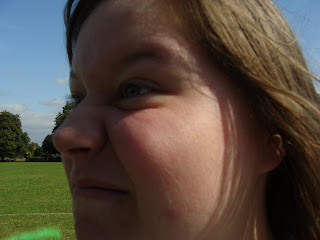Evaluation of research
To obtain the information required for the music Genre action, I used the search engine Google and typed in the key words: Action genre music. This gave me the list of what Google had search with those keywords and the very first result shown was Wikipedia. I also used the software on the computer Itunes, to listen to existing music of that Genre and get a general idea of what type of tone and tempo that the music will be like.
Part of the research that went well was the finding of existing music within the software Itunes as it gave a list of different types of action Genre films or I used my own knowledge of recent films as well of that Genre.
The research that went badly was the finding of pages on Google. Even though I typed in the key words: Action genre music, the results given did not show a clear understanding of what type of instruments are used within the genre though Wikipedia gave a simple explanation of what type of tempo the music should be. So instead I had to use what I could hear off of Itunes and tried to use the similar instruments.
If I was to research again for the music, I would still look up recent Soundtracks of music from Itunes, though I would try and use other search engines rather than Google. Also maybe look and see what types of instruments the musicians play and try and research that instead.
Garage Band
Our task for the software Garage Band was to create our own piece of music in a group, for a genre of our own choice. Which in the case was action.
To begin with the whole group was given a simple demonstration on how to use the Garage Band. This included on how to change instrument styles, mainly the basic requirements on how to change the beats etc.
We found using Garage Band itself quite easy. It was easy to change the different instruments and also using the keyboard was simple from the basic knowledge from previous works in music. The software itself is very basic and takes you threw step by step.
For our music making we used the electronic keyboard and put in some notes we thought that were very fast pacing for our action genre. We used some synethtic music for the base line and a hip-hop instruments aswell we had some random beats and noises which we used to make the music very loud and again keeping up the pace.
The success of the final piece was not achieved. The music notes were too random and that people could not identify with the music (such suggestions: adventure, also horror). It seemed to have more of a comedic quality as with the demonstration many people laughed.
Next time there is sections of beats within the Garage band, which many other people used through out media group used as we did not have the musical capacity to make our own on the keyboard.
Evaluating role in team
The skills I have developed in that week is what type of instruments to use in our genre of music action, which includes bass guitar drums etc.
Using Garage band, the main contributor of the project (playing the music) was me, then Jess was the listener to see what could be improved and moved to certain places. Ben also contributed to the music by suggesting what type of instruments to use at what point.
 I am going to base my super hero on the Childrens series 'Power Rangers'. Although there are going to be some modifications such as title and style, so that it is aimed at more of a teenage audience. Many other comicbook superhero characters have done the same on the big screen, so this could happen with a TV show.
I am going to base my super hero on the Childrens series 'Power Rangers'. Although there are going to be some modifications such as title and style, so that it is aimed at more of a teenage audience. Many other comicbook superhero characters have done the same on the big screen, so this could happen with a TV show. I will be partly using the helmet towards the end of the red ranger, so this really establishes to the audience that this is an action/superhero genre film, for when the central protagonists morphs and begins the fight at the end of the opening. Although due to buget this will have to be made as a type of mask, not a helmet.
I will be partly using the helmet towards the end of the red ranger, so this really establishes to the audience that this is an action/superhero genre film, for when the central protagonists morphs and begins the fight at the end of the opening. Although due to buget this will have to be made as a type of mask, not a helmet.


















